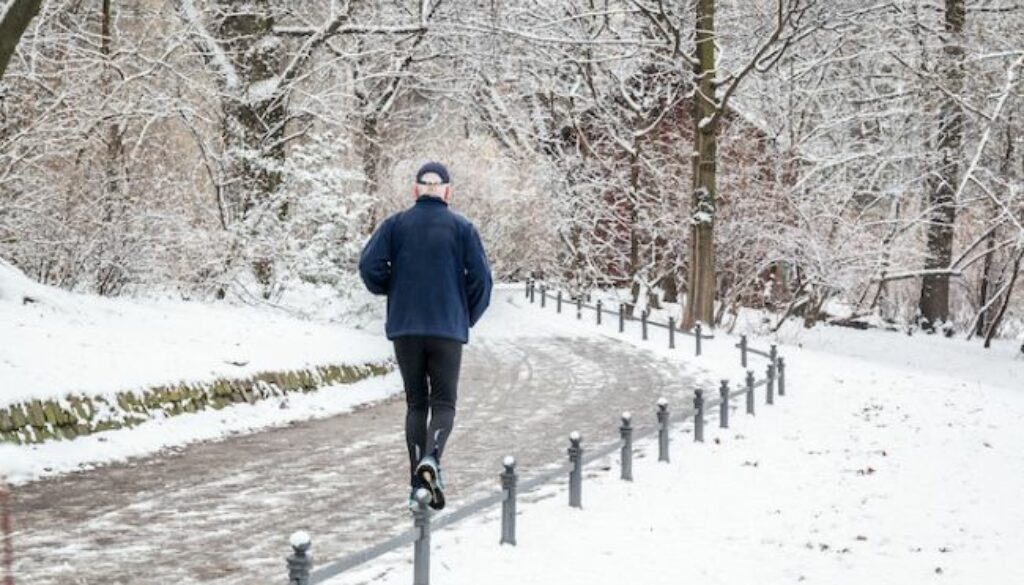How to Stay Safe While Exercising in Cold Weather
Is “walking in a winter wonderland” not quite your style? Maybe you prefer “dashing through the snow” from December through February? While some opt to head for the gym when temperatures plummet, others prefer to exercise outside for the benefits of fresh air and sunshine.
Whether you’re jogging through the neighborhood or shoveling snow in the driveway, there are several safety precautions to consider when working out—or just plain working—in cold weather. By taking these simple precautions, you’ll be able to have a safer and more productive workout.
EXERCISE TIP #1: DRESS IN LAYERS
When the temperature plummets, it’s easy to assume you’ll need to bundle up to be comfortable when exercising, but that’s not the complete picture. Exercising produces body heat, which in turn produces sweat. Sweat cools the body. When sweat evaporates, you lose body heat. Cold weather makes it difficult to exercise comfortably. Dress too warmly and you’ll be uncomfortable when you start to sweat. Don’t dress warmly enough and you’re likely to lose body heat when sweat evaporates. The best solution is to simply dress in layers.
Avoid wearing cotton, which holds in moisture, and use synthetic materials that draw sweat away from the body. The best combination is to use synthetic materials in combination with fleece or wool, along with a waterproof outer layer. By dressing in layers, you can remove / put on clothes as needed.
EXERCISE TIP #2: STAY HYDRATED
When you’re cold, you may not realize you’re getting dehydrated. You should drink plenty of fluids just as you would if working out in hot weather. While sports drinks are a popular choice, they contain many additives, and nothing beats plain water to keep you healthy. If you decide to have a sports drink instead, remember to check the label and the ingredients. The Centers for Disease Control has a useful guide on hidden calories in fruit juices, sodas, sports drinks and more.
EXERCISE TIPS #3: USE SUNSCREEN
Yes, you read that right. Sunscreen. Skin cancer doesn’t care what time of year it is, and the sun is just as powerful and intense in winter, although you may not be aware of it. Be sure to wear sunscreen if you are spending any amount of time outside. You should also wear sunglasses, as the glare from the sun bouncing off snow can be incredibly intense.
EXERCISE TIPS #4: AVOID FROSTBITE AND HYPOTHERMIA
These are two dangerous cold-weather emergencies. Frostbite and hypothermia can be fatal or cause you to lose a limb. Hypothermia occurs when the body is unable to warm itself, resulting in a dangerously low body temperature. Frostbite occurs when a specific body part freezes. While frostbite commonly occurs on the cheeks, nose and ears, it can occur on any part of the body.
Symptoms of hypothermia include:
- Weakness
- Shivering
- Impaired judgment or apathy
- Numbness
- A “glassy” stare
- Loss of consciousness
Symptoms of frostbite include:
- Numbness and loss of feeling in the affected area
- Skin that is discolored (white, gray, yellow or blue)
- Skin with a waxy appearance
If you suspect someone has frostbite or hypothermia, call 9-1-1 immediately. Carefully move the person to a warm place and slowly warm the person. For frostbite, place the affected area in warm water until it appears red. If fingers and toes are affected, place sterile gauze between them to keep them separated. The American Red Cross provides detailed information on first aid for hypothermia and frostbite.
Winter is a beautiful, peaceful time of year. There are few things quite as magical as that first snow or artistic layers of ice covering every leaf and blade of grass. Don’t let winter cause you to retreat into your home and let your exercise routine fall by the wayside. If you like to participate in outdoor activities, go for it! Just be sure to stay safe.




